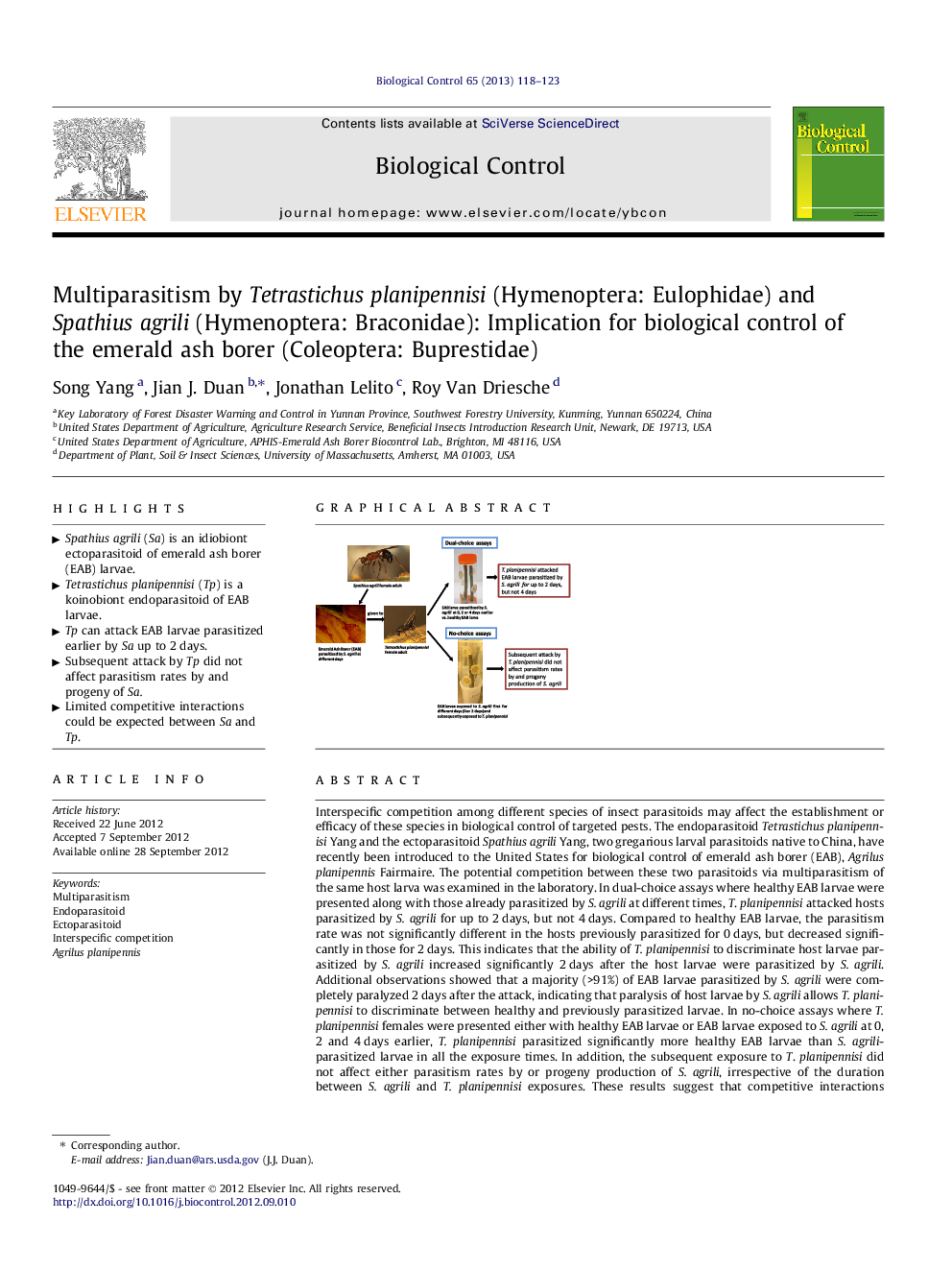| کد مقاله | کد نشریه | سال انتشار | مقاله انگلیسی | نسخه تمام متن |
|---|---|---|---|---|
| 6372864 | 1321063 | 2013 | 6 صفحه PDF | دانلود رایگان |

Interspecific competition among different species of insect parasitoids may affect the establishment or efficacy of these species in biological control of targeted pests. The endoparasitoid Tetrastichus planipennisi Yang and the ectoparasitoid Spathius agrili Yang, two gregarious larval parasitoids native to China, have recently been introduced to the United States for biological control of emerald ash borer (EAB), Agrilus planipennis Fairmaire. The potential competition between these two parasitoids via multiparasitism of the same host larva was examined in the laboratory. In dual-choice assays where healthy EAB larvae were presented along with those already parasitized by S. agrili at different times, T. planipennisi attacked hosts parasitized by S. agrili for up to 2Â days, but not 4Â days. Compared to healthy EAB larvae, the parasitism rate was not significantly different in the hosts previously parasitized for 0Â days, but decreased significantly in those for 2Â days. This indicates that the ability of T. planipennisi to discriminate host larvae parasitized by S. agrili increased significantly 2Â days after the host larvae were parasitized by S. agrili. Additional observations showed that a majority (>91%) of EAB larvae parasitized by S. agrili were completely paralyzed 2Â days after the attack, indicating that paralysis of host larvae by S. agrili allows T. planipennisi to discriminate between healthy and previously parasitized larvae. In no-choice assays where T. planipennisi females were presented either with healthy EAB larvae or EAB larvae exposed to S. agrili at 0, 2 and 4Â days earlier, T. planipennisi parasitized significantly more healthy EAB larvae than S. agrili-parasitized larvae in all the exposure times. In addition, the subsequent exposure to T. planipennisi did not affect either parasitism rates by or progeny production of S. agrili, irrespective of the duration between S. agrili and T. planipennisi exposures. These results suggest that competitive interactions between these parasitoids would be of limited importance on the biological control program if these species were released against EAB at the same time and place.
Highlights⺠Spathius agrili (Sa) is an idiobiont ectoparasitoid of emerald ash borer (EAB) larvae. ⺠Tetrastichus planipennisi (Tp) is a koinobiont endoparasitoid of EAB larvae. ⺠Tp can attack EAB larvae parasitized earlier by Sa up to 2 days. ⺠Subsequent attack by Tp did not affect parasitism rates by and progeny of Sa. ⺠Limited competitive interactions could be expected between Sa and Tp.
Journal: Biological Control - Volume 65, Issue 1, April 2013, Pages 118-123